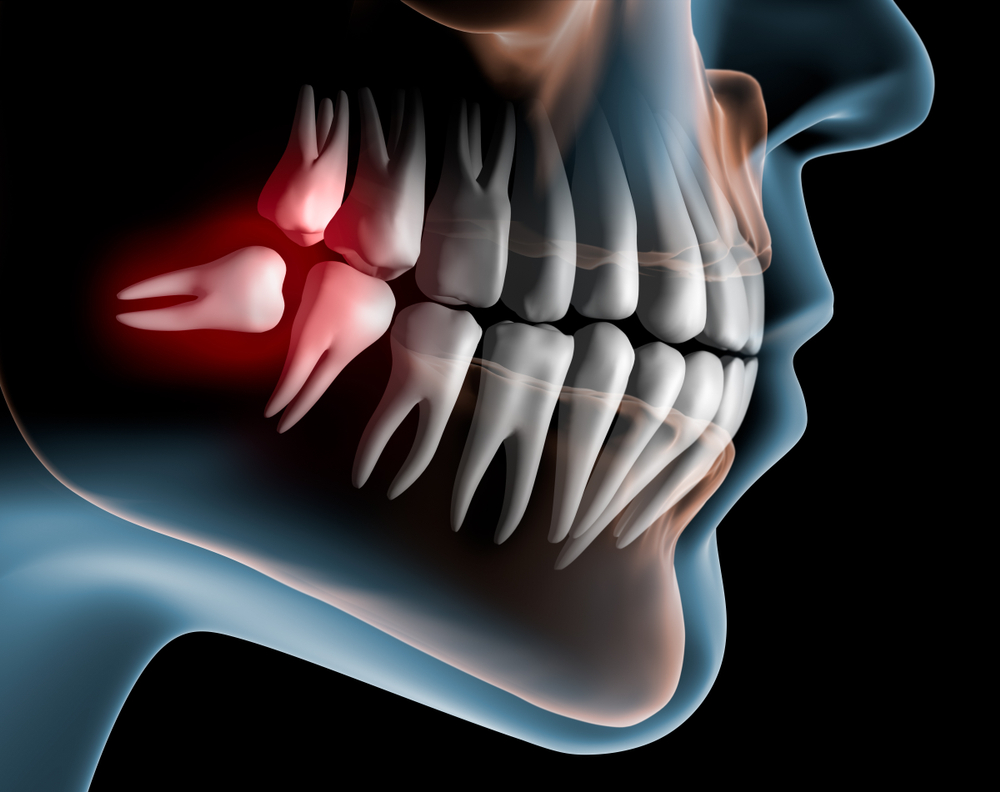Take a look at the smile of an ancient human skull and you’ll notice that their teeth are often remarkably straight (even if a few have gone missing over the centuries). Without braces, fluoride-rich toothpaste, or wisdom tooth extractions, many prehistoric humans managed to maintain the pearly whites of a grinning Hollywood actor. So, how did they manage it?
One of the biggest factors behind this trend is the shrinking of human jaws, resulting in cramped teeth squishing up against one another.
In the past few centuries, impacted wisdom teeth have become incredibly common – a clear indication of humanity’s increasingly jam-packed jaw. The American Academy of Oral and Maxillofacial Surgeons estimates that 90 percent of people have at least one impacted wisdom tooth, often requiring surgical extraction.
During preindustrial times, impacted wisdom teeth appear to have been significantly less common, but other dental problems were still fairly common. Before the dawn of agriculture, however, dodgy wisdom teeth appear to be a rarity. In fact, their whole jawlines appear to be incredibly uncrooked.
In his book The Story of the Human Body, evolutionary biologist Daniel Lieberman writes: “The museum I work in has thousands of ancient skulls from all over the world. Most of the skulls from the last few hundred years are a dentist’s nightmare: they are filled with cavities and infections, the teeth are crowded into the jaw, and about one-quarter of them have impacted teeth. The skulls of preindustrial farmers are also riddled with cavities and painful-looking abscesses, but less than 5 percent of them have impacted wisdom teeth.”
“In contrast, most of the hunter-gatherers had nearly perfect dental health. Apparently, orthodontists and dentists were rarely necessary in the Stone Age,” he added.
Ouch: Impacted wisdom teeth, and crooked teeth, are often caused by the lower jaw being too cramped.
Image credit: peterschreiber.media/Shutterstock.com
The lack of cramped teeth seen in people of the past is closely linked to the shrinking of jaws noted in a number of scientific studies.
In 2015, researchers studied 292 human skeletons found in the Levant, Anatolia, and Europe that dated between 28,000 to 6,000 years ago. Their findings showed that people from more recent agricultural communities had smaller (and differently shaped) lower jaws compared to earlier hunter-gatherer people.
This, they argued, is likely to reflect the radical shift in our diets that’s occurred throughout recorded history. Before the emergence of agriculture around 12,000 years ago, people ate a diet of meat and undomesticated plants which were tougher and required more chewing.
After this agricultural revolution, humans had broader access to foods like easy-to-eat vegetables, grain products, and rice, which required less jaw strength to munch. Things became significantly sloppier in the modern era with the advent of processed and ultra-processed foods that barely require any significant jaw activity to consume.
Researchers have noted that the timeframe is extremely short in terms of evolution – it’s possible to see the difference in just a few generations – so the change in jaw size isn’t likely to be genetic. Instead, most believe our smaller jaws are a reflection of the food we eat as infants during the developmental growth of our jaws.
The impact is so important that some scientists say we’re living in a “jaw epidemic” that’s having a widespread effect on global health. On top of dental problems, researchers believe that smaller jaws are impacting our mouth cavity and airways, resulting in sleep apnea and excessive snoring. In turn, more people are experiencing sleep deprivation, which can up the risk of heart disease, high blood pressure, depression, cancer, and Alzheimer’s disease.
Going back to the Stone Age and ditching agriculture perhaps isn’t the wisest solution to the problem, but scientists have proposed a few ways that the “jaw epidemic” could be curtailed. They believe the key is helping to develop a robust lower jaw during early childhood through basic practices like giving sugar-free gum to kids, as well as feeding babies less mushy foods after they get on to solid foods.
“The jaws epidemic is very serious, but the good news is, we can actually do something about it,” Paul Ehrlich, the Bing Professor of Population Studies at Stanford University who has studied the issue, said in a statement.
“We’re going to continue learning the causes of the jaws epidemic and continue getting the word out on how this is a highly treatable condition early on in life,” continued Ehrlich. “Parents and caregivers, in collaboration with dentists and orthodontists, can all help children to avoid some serious health problems later on in their lives.”
The content of this article is not intended to be a substitute for professional medical advice, diagnosis, or treatment. Always seek the advice of qualified health providers with questions you may have regarding medical conditions.
All “explainer” articles are confirmed by fact checkers to be correct at time of publishing. Text, images, and links may be edited, removed, or added to at a later date to keep information current.
Source Link: How Come Ancient Skulls Often Have Straight Teeth?
